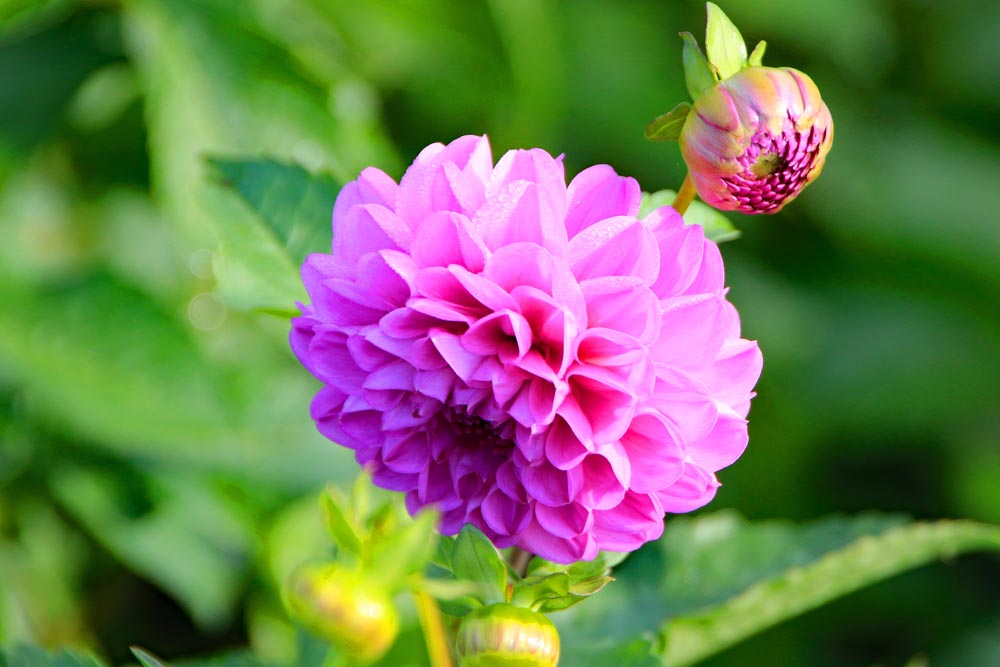

July:
Generally a busy time on the allotment and often one of the hottest months. Young crops should be kept well watered and free of weeds. Water in the cool of the morning or evening.
Watch out for blight and pests.
Keep thinking about water conservation so we’re not reliant on using hosepipes and mains water.
Harvest
Lift early potatoes and plant fast maturing crops in the bare soil.
Harvest garlic and shallots as the foliage begins to become yellow and straw-like.
Pick the first of the early tomatoes.
July is the start of globe artichoke season. If your plant is into its second year then cut off the top bulb once big and swollen with a couple of inches of stem attached.
Lift autumn planted onions for immediate use.
Continue to pick rhubarb until the end of the month and begin to harvest the main crop of your strawberries.
Start to pick plums, early pears and apples.
Keep up with the harvesting of all crops because the allotment is now in full production.
Sowing and Planting
Start sowing the seeds of the overwintering crops of kales, spring cabbage, radicchio, chicory, spinach beet and a hardy type of onion to mature in the early summer of next year. Plant into firm soil as soon as ready.
Now is the best time to sow the main crop of carrots to avoid attack from root fly.
Continue with successional sowings of beetroot, radish, spring onions and lettuce. Follow the instructions on the back of the seed packet, and sow every 2 - 4 weeks for a continuous supply of crops.
Plant out the last marrow, pumpkins, squashes, overwintering cabbages and leeks. Cover with netting to help protect them from the birds.
Vegetables
Water all crops at least once a week.
Use a liquid feed on most crops in moist soil. Try making your own from nettles, comfry etc.
Start to draw the soil up around the base of Brussels sprouts and sweet corn plants to encourage extra roots.
A last sowing of dwarf French beans can be made early in the month for a September harvest.
Fruit
Prune any apples and pears that are trained as espaliers, cordons, step-overs etc. Reduce all this season’s growth by one third, pruning just above a leaf joint.
Protect ripening cherries from birds.
Once you’ve finished harvesting rhubarb at the end of the month, give crowns a heavy mulch of manure or similar.
Flowers
Keep all cut flowers well watered.
Keep tying in sweet peas and cut off faded blooms.
Keep dahlias well fed – they are greedy plants.
Cut any annual cut flowers as they are ready.
Greenhouse
Keep greenhouses, polytunnels and cold frames well ventilated and dampen down floors staging etc. on the hottest days.
Continue to tie in new growth on tomatoes, melons and cucumbers.
Tomatoes should be well watered to avoid blossom end rot and fed regularly with a high potash (potassium) fertiliser. Continue to remove side shoots and on warm days tap the plant to aid pollination.
Melons may require pollinating. To do this remove a male flower (one without a small fruit behind it) and push it inside the female flower with the small fruit.
Pests and Diseases
This is the start of potato blight season, and if the weather is wet and humid in July then your crop is likely to be at risk. You can use fungicides containing copper to help protect your crop from the blight; these should be sprayed from June onwards if a wet July is predicted. (Crop rotation the following year is advisable). An infected plant will have a watery rot on its leaves, causing them to collapse – the infected matter should be binned or burned and not placed into your compost, as this will not kill the disease and it will reoccur the following year.
The main pests are aphids, cabbage white butterfly caterpillars and pea moth. Spray to control the aphids and pea moth with an insecticidal soap brought from the garden centre. Use the biological control of a pathogenic nematode, Steinernema carpocapsae, to kill the caterpillars.


